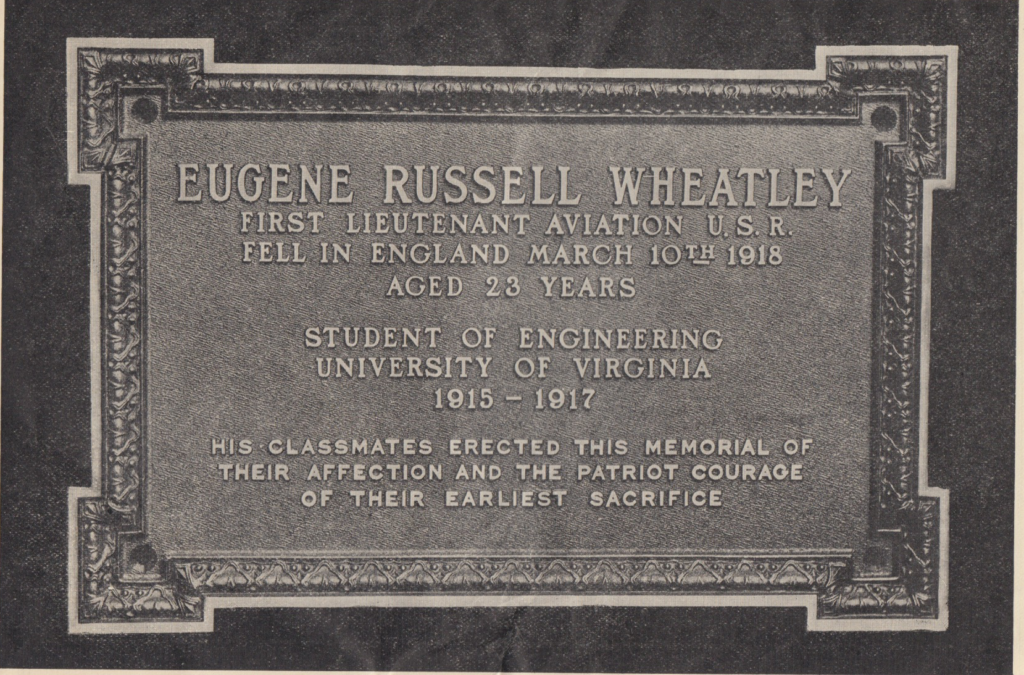
This Memorial Day, I found myself thinking about those who came before, and the ways in which they gave their lives to protect our country. As I went through my archives, one name that came out from the pages of a 1918 issue of the Alumni News was Eugene Russell Wheatley.
“Bus” Wheatley had the misfortune to be the first UVA engineering student to die in the First World War. Like his more well known predecessor James Rogers McConnell, he was an aviator. Unlike McConnell, who flew for the Lafayette Escadrille, Wheatley was a cadet in the Royal Flying Corps, the predecessor to the RAF. Both died for the war effort before the United States officially entered, in April 1917. In fact, Wheatley perished nine days short of a year after McConnell, on March 10, 1918, in the most ironic of accidents: while flying a training mission, his plane caught fire. T.J. Michie Jr. relays what happened next: “Rus managed to sideslip the machine down safely, but landed on a railroad track and was run over by a train, which I think is the worst luck I have heard of in the war.”
But where McConnell is famously memorialized in the Gutzon Borglum statue The Aviator, little save the plaque above brings Wheatley to our remembrance. Perhaps it is a difference in their respective statures at the University; where McConnell was King of the Hot Feet (and, apparently, a Seven), Wheatley was an engineering student, a member of Theta Delta Chi, who otherwise apparently kept to himself. That we remember McConnell is inevitable; we should spare a thought for Wheatley and others like him, who though less sweeping in their heroic gestures still made the ultimate sacrifice.

I like reading your blog.It’s hard to imagine the aviator’s and what constituted an air-craft.I’ve read about WW1 and the horrible trench warfare.The mustard gas.Otto dix painted some of this.Just the gas mask and the heavy suit the British used is enough to give you nightmares.